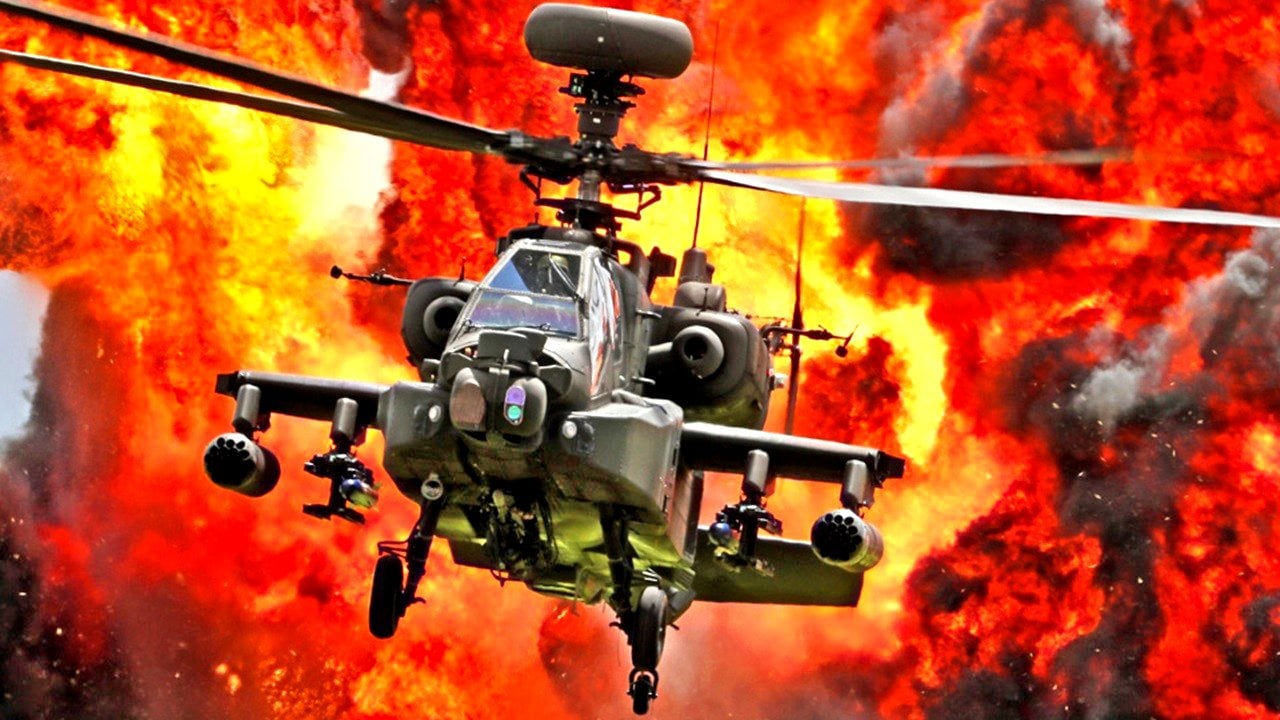The New AH-64E Apache Helcopter Looks Like a Beast in the Sky
The Boeing AH-64 has been the workhorse attack helicopter for the United States Army since the mid-1980s but it shows no signs of being put out to pasture anytime soon.
Enhanced AH-64E Apache Completed Its First Flight: The Boeing AH-64 has been the workhorse attack helicopter for the United States Army since the mid-1980s but it shows no signs of being put out to pasture anytime soon.
In fact, just last month, the enhanced AH-64E Apache completed its first flight.
The version 6.5 variant offers upgraded connectivity, lethality, navigation, and survivability capabilities. The V6.5, awarded by the U.S. Department of Defense (DoD) in December 2021, includes software updates enhancing capabilities and improving the pilot interface.
"We saw our hard work come to life with this first flight," said Christina Upah, vice president of Attack Helicopter Programs and senior Boeing Mesa site executive. "These enhancements will take the E-model Apache to the next level in terms of capabilities, ensuring Apaches continue to dominate future battlefields."
Among the enhancements include optimized route and attack planning; Enhanced Link 16 features; and integration of an Open Systems Interface, setting the stage for a Modular Open Systems Approach for maximum interoperability, faster integration, and advanced capabilities fielding.
"We're very excited about the ongoingsh development of the V6.5 software as it paves the way for Apache modernization," said Col. John (Jay) Maher, U.S. Army Apache project manager. "V6.5 aligns the entire E model fleet under the same software, streamlining training and maintenance while providing a pathway for sensor/capability parity, and enables the Army to address mandates and critical technologies. Ensuring relevance into the future is a top priority."
The aerospace giant has been working with the U.S. Army to integrate the Improved Turbine Engine (ITE), a General Electric Aerospace T901. It promises to offer improvements in reach, available power, time on station, and fuel efficiency, as well as sustainment improvements like health and usage monitoring, maintenance, and engine lifespan.
However, the T901, which is intended to replace the engines in Apaches and UH-60 Black Hawk utility helicopters and will be used in the Future Attack Reconnaissance Aircraft, was delayed by more than a year due to issues related to the coronavirus pandemic, DefenseNews reported.
AH-64E Apache: Going the Distance
It was in March of this year, that Boeing announced that the U.S. Army Apaches had achieved five million flight hours, equating to flying an AH-64 nonstop for more than 208,333 days or 570 years and nine miles. In total 1.3 million of those five million hours were accomplished during combat, the company added.
Those flight hours have only continued to accumulate.
Since 1984 when the first AH-64 took flight, the U.S. Army has operated A, D and E-model Apaches, while the U.S. Army currently operates D-model Apaches while it will begin to adopt the AH-64E Apache.
"The five million flight hours milestone is a testament to the reliability and availability of the Apache in some of the world’s most demanding conditions. Supporting the Soldiers who fly and maintain the Apache is priority one," Maher said in March.
The Apache first saw deployment in combat during 1989's Operation Just Cause, the invasion of Panama, where it participated in more than 240 combat hours, attacking various targets at night.
Nearly half of all the U.S. Army's AH-64 Apaches were deployed to Saudi Arabia following Iraq's invasion of Kuwait in 1990. During Operation Desert Storm, on January 17, 1991, eight Apaches guided by four MH-53 Pave Low IIIs destroyed part of Iraq's radar network in the operation's first attack.
The AH-64 played roles in the Balkans during separate conflicts in Bosnia and Kosovo in the 1990s, and it also proved to be the only U.S. Army platform capable of providing accurate close air support (CAS) duties for Operation Anaconda, often taking fire and quickly repaired during the intense early fighting during Operation Enduring Freedom in Afghanistan in 2001.
International Customers
In addition to remaining the primary attack helicopter of the U.S. Army, the AH-64 – which is primarily built by Boeing in Mesa Arizona – has also become the primary attack helicopter of multiple nations, including Greece, Japan, Israel, the Netherlands, Singapore, and the United Arab Emirates. In September 2022, Poland announced the selection of Boeing’s AH-64E Apache for the Polish Armed Forces’ new attack helicopter fleet.
It has been built under license in the United Kingdom as the AgustaWestland Apache.

Boeing will produce a total of 184 AH-64E Apaches for the U.S. Army and international customers, including the first Apaches for Australia. This $1.9 billion award brings the total current funded value of the contract to $2.1 billion and has the potential to increase to more than $3.8 billion with future obligations.
According to the aerospace firm, the U.S. Army will receive 115 remanufactured Apaches, with an additional 15 Apaches to be procured as options, ensuring significant savings to taxpayers. The additional 54 aircraft will be delivered to partner nations as part of Foreign Military Sales.
Author Experience and Expertise
Peter Suciu is a Michigan-based writer. He has contributed to more than four dozen magazines, newspapers, and websites with over 3,200 published pieces over a twenty-year career in journalism. He regularly writes about military hardware, firearms history, cybersecurity, politics, and international affairs. Peter is also a Contributing Writer for Forbes and Clearance Jobs. You can follow him on Twitter: @PeterSuciu.


